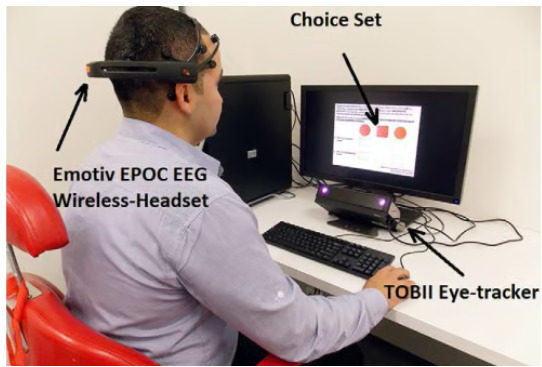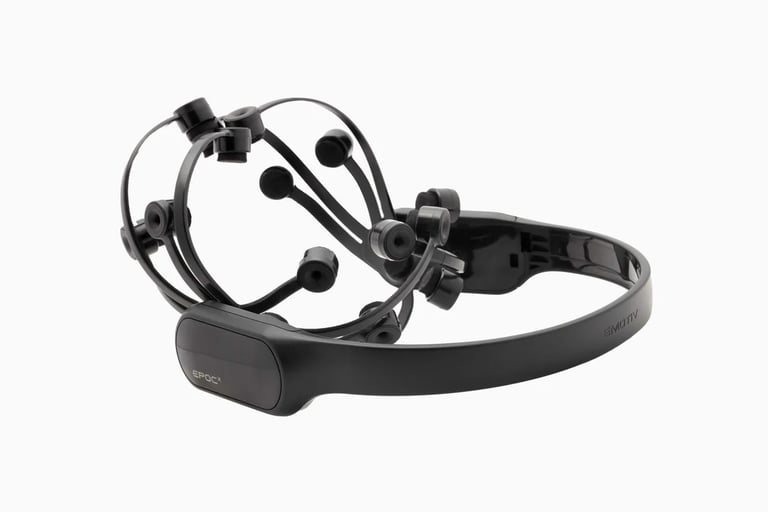Consumer neuroscience is an emerging interdisciplinary field that combines psychology, neuroscience, and economics to study how the brain is physiologically affected by advertising and marketing strategies (Lee, Broderick, & Chamberlain, 2007; Madan, 2010). It links consumer choices and decision-making to marketing research (Camerer, Loewenstein, & Prelec, 2004; Pirouz, 2007; Plassmann, Ramsoy, & Milosavljevic, 2012). The general assumption is that human brain activity can provide marketers with information not obtainable via conventional marketing research methods (e.g., interviews, questionnaires, focus groups) (Ariely & Berns, 2010). This is mainly driven by the fact that people cannot (or do not want to) fully explain their preferences when explicitly asked; as human behavior can be (and is) driven by processes operating below the level of conscious awareness (Calvert & Brammer, 2012). In such cases, the effectiveness of the different marketing strategies may be evaluated by monitoring brain activity resulting from consumers observing different advertisements and products (Astolfi et al., 2009; Ohme, Reykowska, Wiener, & Choromanska, 2009). The change in the human brain signal, denoted as Electroencephalogram (EEG), and its main spectral bands of Delta (0–4 Hz), Theta (3–7 Hz), Alpha (8–12 Hz), Beta (13–30 Hz), and Gamma (30–40 Hz) is observed to examine consumers’ cognitive or affective processes in response to prefabricated marketing stimuli (Aurup, 2011; Bourdaud, Chavarriaga, Galan, & Millan, 2008; Custdio, 2010; Kawasaki & Yamaguchi, 2012; Khushabaa et al., 2012; Mostafa, 2012; Ohme, Reykowska, Wiener, & Choromanska, 2010).
I am listing on this page my publications in this field for those interested to read and learn more.
R. N. Khushaba, L. Greenacre, A. Al-Timemy, and A. Al-Jumaily, "Event-Related Potentials of Consumer Preferences", Procedia Computer Science - Journal publication of proceedings of IEEE International Symposium on Robotics and Intelligent Sensors (IRIS 2015), Langkawi, Malaysia, vol. 76, pp. 68–73, DOI: http://dx.doi.org/10.1016/j.procs.2015.12.277, 2015. Click Here
R. N. Khushaba, Chelsea Wise, Sarath Kodagoda, and Jordan Louviere, "Integrating Eye-Tracking and Wireless Electroencephalogram (EEG) in Consumer Neuroscience", Annual International Conference of the IEEE Engineering in Medicine and Biology Society, EMBS 2013; 6925-8, 2013. Click Here
R. N Khushaba, C. Wise, S. Kodagoda, J. Louviere, B. E. Kahn, and C. Townsend, "Consumer Neuroscience: Assessing the Brain Response to Marketing Stimuli Using Electroencephalogram (EEG) and Eye Tracking", Expert Systems with Applications, vol.40, no. 9, pp. 3803–3812, 2013. Click Here (ERA Ranking: B)
R. N. Khushaba, L. Greenacre , S. Kodagoda, S. Burke, J. Louverie, and G. Dissanayake " Choice Modeling and the Brain: A Study on the Electroencephalogram (EEG) of Preferences", Expert Systems with Applications, vol. 39, no. 16, pp. 12378–12388 , 2012. (ERA Ranking: B) Click Here
R. N. Khushaba ; S. Kodagoda ; G. Dissanayake ; L. Greenacre ; S. Burke ; and J. Louverie, "A neuroscientific approach to choice modeling: Electroencephalogram (EEG) and user preferences", The 2012 International Joint Conference on Neural Networks (IJCNN), Brisbane, QLD, Australia, 10-15 June 2012. Click Here



